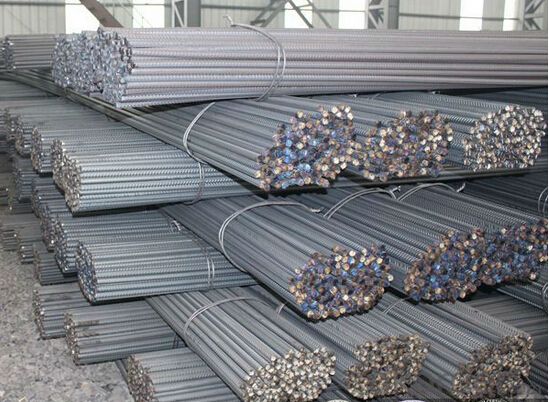BS4449B 500A/500B Deformed Steel Rebar/Iron Rod for Construction
- Loading Port:
- Tianjin
- Payment Terms:
- TT OR LC
- Min Order Qty:
- 100 m.t.
- Supply Capability:
- 10000 m.t./month
OKorder Service Pledge
Quality Product, Order Online Tracking, Timely Delivery
OKorder Financial Service
Credit Rating, Credit Services, Credit Purchasing
You Might Also Like
Specification
Standard:
AISI,JIS,GB,BS,DIN,API,EN,ASTM
Technique:
EFW,Hot Rolled,Cold Rolled,Cold Drawn,ERW,Forged,Saw,Extruded,Spring
Shape:
U Channel,Square,C Channel,Hexagonal,Round,Rectangular,Oval,LTZ
Surface Treatment:
Galvanized,Coated,Copper Coated,Color Coated,Oiled,Dry,Chromed Passivation,Polished,Bright,Black,PVDF Coated
Steel Grade:
Q195,Q215,Q235,Q215B,Q235B,RHB335,HRB400,200 Series,300 Series,400 Series,600 Series,SS400-SS490,10#,20#,A53(A,B)
Certification:
ISO,SGS,BV,IBR,RoHS,CE,API,BSI,UL
Thickness:
6-34MM
Width:
6-34mm
Length:
12m
Outer Diameter:
6-34mm
Net Weight:
10kg
Packaging:
seaworthy packaging
BS4449B 500A/500B Deformed Steel Rebar/Iron Rod for Construction
Details of the BS4449B 500A/500B Deformed Steel Rebar/Iron Rod for Construction
| Standard & Grade: | GB1499-98 : HRB335,HRB400,HRB500 |
| BS4449-1997 : GR460,GR500 | |
| CAN/CSA-G30.18-M92 : 400W | |
| ASTM A615 : Gr.40, Gr.60 | |
| Diameter: | 6mm;8mm;10mm;12mm;14mm;16mm;18mm;20mm;22mm;25mm;28mm;30mm;32mm;35mm;40mm |
| Length: | 6m,9m,12m |
| Packing: | Bundle packing |
| Origin: | China |
| Application: | Construction,Road,Machinery processing,Welding fields. |
| Delivery time: | 10-25 days |
| Shipment: | By bulk vessel or Container |
| Documents: | Mill Test Certificate,Commercial Invoice,Packing List,Certificate of Origin |
Company Introduction of the BS4449B 500A/500B Deformed Steel Rebar/Iron Rod for Construction
CNBM International Corporation is the most import and export platform of CNBM group(China National Building Material Group Corporation) ,which is a state-owned enterprise, ranked in 270th of Fortune Global 500 in 2015.
With its advantages, CNBM International are mainly concentrate on Cement, Glass, Iron and Steel, Ceramics industries and devotes herself for supplying high quality series of refractories as well as technical consultancies and logistics solution.


Packaging & Delivery of the BS4449B 500A/500B Deformed Steel Rebar/Iron Rod for Construction
| Packaging Detail | Sea worthy packing /as per customer's packing instruction |
| Delivery Detail | 15 ~ 40 days after receiving the deposit |
FAQ
| Are you a trading company or manufacturer? | Manufacturer |
| What’s the MOQ? | 1000m2 |
| What’s your delivery time? | 15-20 days after downpayment received |
| Do you Accept OEM service? | Yes |
| what’s your delivery terms? | FOB/CFR/CIF |
| What's the Payment Terms? | 30% as deposit,70% before shipment by T/T |
| Western Union acceptable for small amount. | |
| L/C acceptable for large amount. | |
| Scrow ,Paybal,Alipay are also ok | |
| Why choose us? | Chose happens because of quality, then price, We can give you both. Additionally, we can also offer professional products inquiry, products knowledge train (for agents), smooth goods delivery, excellent customer solution proposals. |
| What's your available port of Shipment? | Main Port, China |
| What’s your featured services? | Our service formula: good quality+ good price+ good service=customer's trust |
| Where are your Market? | Covering more than 160 countries in the world |
- Q: Are there any environmental concerns related to steel rebars?
- Yes, there are some environmental concerns related to steel rebars. The production of steel requires significant amounts of energy and releases carbon dioxide emissions, contributing to climate change. Additionally, the extraction of iron ore and other raw materials for steel production can cause habitat destruction and depletion of natural resources. However, steel rebars are also highly recyclable, reducing the need for new steel production and minimizing environmental impact.
- Q: How are steel rebars used in the construction of wastewater treatment plants?
- Steel rebars are used in the construction of wastewater treatment plants to reinforce the concrete structures, such as tanks and basins, that are essential for storing and treating wastewater. The rebars provide strength and stability to these structures, ensuring they can withstand the weight of the water and the various chemicals used in the treatment process. Additionally, the rebars help to prevent cracking and structural failure, ensuring the longevity and reliability of the wastewater treatment plant.
- Q: Can steel rebars be used in residential swimming pool construction?
- Yes, steel rebars can be used in residential swimming pool construction. Steel rebars are commonly used to reinforce concrete structures, including swimming pools. The rebars provide added strength and durability to the concrete, making it capable of withstanding the pressure and weight of the water. The use of steel rebars helps prevent cracking and structural damage to the pool over time. Moreover, steel rebars are readily available, cost-effective, and can be easily installed by professional pool builders. Overall, the inclusion of steel rebars in residential swimming pool construction is highly recommended to ensure a long-lasting and reliable pool structure.
- Q: Are there any disadvantages to using steel rebars?
- Yes, there are some disadvantages to using steel rebars. Firstly, steel rebars can corrode over time, especially in environments with high moisture or exposure to chemicals, which can reduce their strength and durability. Additionally, steel rebars are susceptible to thermal expansion and contraction, leading to cracking in concrete structures. Moreover, steel rebars are heavy and can be challenging to handle and transport, making construction processes more labor-intensive.
- Q: How are steel rebars affected by long-term exposure to water?
- Steel rebars are susceptible to corrosion when exposed to water for a prolonged period. The presence of moisture and oxygen initiates an electrochemical reaction, causing the steel to rust and gradually weaken over time. This can compromise the structural integrity of the rebars and the surrounding concrete, leading to potential structural failure if not addressed.
- Q: How do steel rebars affect the overall acoustic properties of a structure?
- Steel rebars have a minimal impact on the overall acoustic properties of a structure. Since steel is a dense and rigid material, it effectively dampens sound and reduces vibrations. However, the primary purpose of steel rebars is to reinforce the structure and provide strength, rather than influence its acoustic properties.
- Q: Can steel rebars be used in the construction of underground parking garages?
- Yes, steel rebars can be used in the construction of underground parking garages. Steel rebars provide reinforcement and strength to the concrete structures, making them suitable for use in underground parking garages where durability and load-bearing capacities are important.
- Q: Can steel rebars be used in structures with extreme temperature variations?
- Yes, steel rebars can be used in structures with extreme temperature variations. Steel is known for its excellent thermal conductivity, which allows it to expand and contract with temperature changes. Additionally, steel rebars have high tensile strength and can withstand the mechanical stresses induced by temperature fluctuations, making them suitable for use in such structures.
- Q: Can steel rebars be used in seawater desalination plants?
- Steel rebars are indeed applicable in seawater desalination plants; however, careful consideration must be given to the potential impact of corrosion caused by the high salt concentration in seawater. To address this concern, several measures can be adopted. One popular approach involves employing corrosion-resistant alloys like stainless steel rebars or epoxy-coated rebars to shield against the corrosive effects of saltwater. Furthermore, regular maintenance and monitoring are essential for averting and detecting any corrosion-related problems. In conclusion, although steel rebars can be utilized in seawater desalination plants, it is imperative to incorporate corrosion protection strategies to ensure their durability and structural soundness.
- Q: What are the design considerations for using steel rebars in construction?
- Some important design considerations for using steel rebars in construction include the required strength and load-bearing capacity, corrosion resistance, compatibility with other construction materials, durability, and ease of installation. Steel rebars should be chosen based on their appropriate diameter, grade, and spacing to ensure structural integrity and safety. Additionally, proper detailing and placement of rebars are essential to ensure that they are effectively embedded within concrete and can withstand the anticipated stresses and forces during construction and throughout the lifespan of the structure.
Send your message to us
BS4449B 500A/500B Deformed Steel Rebar/Iron Rod for Construction
- Loading Port:
- Tianjin
- Payment Terms:
- TT OR LC
- Min Order Qty:
- 100 m.t.
- Supply Capability:
- 10000 m.t./month
OKorder Service Pledge
Quality Product, Order Online Tracking, Timely Delivery
OKorder Financial Service
Credit Rating, Credit Services, Credit Purchasing
Similar products
Hot products
Hot Searches
Related keywords


































